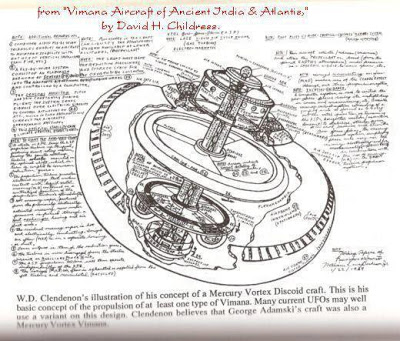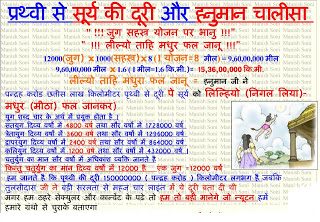- The gross body (sthūladēha)
- The vital body (prāṇa-dēha)
- The mental body (manodēha)
- The intellect or causal body (kāraṇdēha)
- The subtle ego or supracausal body (mahākāraṇdēha)
- The soul or the God Principle in each of us (ātmā)

The vital energy body
This is the body also known as the prana-deha. This body provides the vital, life sustaining energy for all the functions of the physical as well as the mental body. There are five types of vital energies or praana:- Prāna: Energy for the activity of inhalation.
- Udāna: Energy for the activity of exhalation and speech.
- Samāna: Energy for the activity of the stomach and intestines.
- Vyāna: Energy for voluntary and involuntary movements of the body.
- Apāna: Energy for urination, excretion, ejaculation, childbirth, etc.
At the time of death the vital energy is released back into the Universe and also helps in propelling the subtle body in its onward journey.The mental body or the mind
The mental body or the mind is the seat of our feelings, emotions and desires. It carries in it countless number of impressions from this life and previous lives. It is made up of three parts:- The conscious mind: It is that part of our thoughts and feelings that we are aware of.
- The sub-conscious mind: It contains all the impressions required to complete our destiny in our current lifetime. Thoughts from the sub-conscious mind sometimes emerge into the conscious mind from time to time either in response to some external stimulus or at time even without it. For example during the course of one’s day one gets a random and unrelated thought about some vague incident in one’s childhood.
- The unconscious mind: This is the aspect of our mind that we are completely unaware of. This contains all the impressions that are associated with our accumulated account.
The sub-conscious mind and unconscious mind together are known as the Chitta.
http://veda.wikidot.com/chittaSometimes we also refer to an aspect of the mental body as the desires body or vāsanādeha. This is the aspect of the mind that contains all the impressions of desires.Please refer to the article on ‘Why we do the things we do’ as well as the e-tutorial of the same name to understand the functional structure of the mind.The physical organ associated with the mental body is the brain.The intellect
The causal body or the intellect body is the body which deals with the decision making process and reasoning ability.
The physical organ associated with the intellect body is the brain.The subtle ego
The subtle ego or the supracausal body is the final vestige of the nescience and is the feeling that we are separate from God.The soul
The soul is the God principle within us and is our true nature. It is the main component of the subtle body which is a fraction of the Supreme God Principle with the qualities of Absolute Truth (Sat), Absolute Consciousness (Chit) and Bliss (Ānand). The soul is unaffected by the ups and downs in life and is in a perpetual state of Bliss. It looks at the ups and downs of life in the Great Illusion (Maya) with an observer stance. The soul is beyond the 3 subtle basic components; however the rest of our consciousness like the physical body and the mental body is made up of it.The subtle body
The subtle body is defined as that part of our being or consciousness that leaves our physical body at the time of physical death. It comprises of the mental body, the causal cody or intellect, the supracausal body or subtle ego and the soul. What is left behind at the time of physical death is our physical body. The vital energy is released back into the Universe.The following are some other aspects of the subtle body- Subtle sense organs: By subtle sense organs we mean the subtle aspect of our 5 sense organs by which we are able to perceive the subtle realm. For example we are able to perceive a subtle fragrance such as jasmine without their being any stimulus to cause it. Also the fragrance may only be experienced by one person and not by the others in the same room. This is explained in more detail. Also refer to our article on – What is sixth sense?
- Subtle motor organs: By subtle motor organs we mean the subtle aspect of our physical motor organs such as our arms, tongue, etc. All activity is initiated first in subtle motor organs and then executed in the physical dimension by one’s gross motor organs.
10. Nescience
All the other aspects of our being other than the soul are part of the Great Illusion. It is called Nescience or Avidyā which when literally translated means absence of knowledge. The word Nescience stems from the fact that we identify ourselves with our gross body, mind and intellect and not with our true nature which is the soul or the God principle within us.
Nescience is the root cause of unhappiness. Man gets attached to money, his own house, family, city, country, etc. The greater the attachment to any individual or object, greater is the likelihood of unhappiness arising from attachment. Even an ideal social worker or a Saint may become attached to the society or His devotees respectively. The greatest attachment that each one has is for himself; that is his own mind and body. Even a slight discomfort or illness can make one unhappy; hence everyone should gradually become detached about oneself and accept pain and illness in one’s stride. This is of course with the inherent understanding that happiness and unhappiness in life is experienced primarily due to our destiny. Also that only by identifying with the soul can we experience perpetual Bliss.The soul and Nescience together constitute the embodied soul. Nescience for a living person has twenty components in all - the gross body, five subtle sense organs, the five subtle motor organs, the five vital energies, the conscious mind, the subconscious mind, the intellect and the ego. Since the functions of the components of the subtle body go on continuously, the attention of the embodied soul is drawn to them instead of the soul, that is away from spiritual knowledge to Nescience.
संस्कृति – विमानशास्त्र – The Lavitation Theory Part- 1
विज्ञान प्रसार (वि.प्र.) विज्ञान एवं प्रौद्योगिकी विभाग, भारत सरकार की
रिपोर्ट
New Evidence of Ancient Indian Science Of Space Travel Source:
Conspiracy Journal#205 April 11, 2003
कुछ सालों पहले चीन पुरातत्त्व सरकार ने ल्हासा तथा तिब्बत में
संस्कृत दस्तावेजों की खोज की है और उन्हें अनुवाद करने के लिए
University of Chandigarh भेजा गया है।
इस विश्वविध्यालय की Dr. Ruth Reyna ने बताया कि इन दस्तावेजों
में विमान का अंतरतारकीय माध्यम के निर्माण करने की बिधि दी है।
अंतरखगोलीय माध्यम या अंतरतारकीय माध्यम हाइड्रोजन और
हिलीयम के कणों का मिश्रण होता है जो अत्यंत कम घनत्व की स्थिती
मे सारे ब्रह्मांड मे फैला हुआ रहता है।
अंग्रेज़ी में “अंतरतारकीय” को “इन्टरस्टॅलर” (interstellar) और
“अंतरतारकीय माध्यम” को “इन्टरस्टॅलर मीडयम” (interstellar
medium) कहते हैं।
उन्होंने आगे बताया विमान को संचालित करने के लिए गुरुत्वाकर्षण
विरोधी (anti-gravitational) शक्ति की आवश्यकता होती है और anti-
gravitational की प्रणाली “laghima” शक्ति प्रणाली अनुरूप होती है।
“laghima” की संस्कृत में सिद्धि कहते है और इंग्लिश में levitation
कहा जाता है। levitation की शक्ति को आप इस विडियो में देख सकते
हैं जो की anti-gravitational होती है।
यही अंतरतारकीय माध्यम (interstellar medium) विमान के अन्दर
levitation power को activate करता है और विमान ऊपर की ओर
उठता है।
http://www.youtube.com/watch?v=SnLj8DMqaC8
http://www.youtube.com/watch?feature=player_embedd
ed&v=tW6pVFOpE6Q#!
http://www.virtualsynapses.com/2010/09/power-of-
levitation-laghima.html#.URjNix04uIA
जैसा की हम अपने ग्रंथो में देखते हैं कि भगवन, ऋषि तथा कई देवता
वायु मार्ग द्वारा आते थे। ये वही anti-gravitational वाली levitation
शक्ति का प्रयोग करते थे।
इसी levitation शक्ति (विमानों के लिए) का वर्णन और प्रणाली, चीन
को उन दस्तावोजों में मिली है। जिसका अनुवाद किया जा रहा है।
levitation power कोई तंत्र विद्या द्वारा नहीं की जाती है। यह एक
ब्रह्मांडीय शक्ति है। जिसको करने के लिए तप और कई नियमों का पालन
करना पड़ता है।
http://www.vigyanprasar.gov.in/comcom/vimana.htm
।। जयतु संस्कृतम् । जयतु भारतम्




